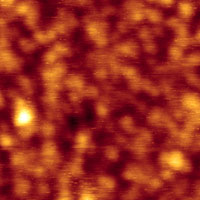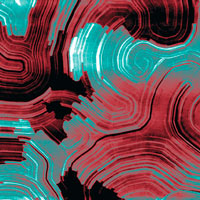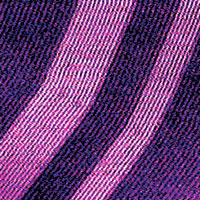Tapping Mode
High resolution imaging
Hi'Res-C AFM probes with medium force constant
Hi'Res-C14/Cr-Au
A polymer is a substance composed of molecules with a large molecular mass composed of repeating structural units, or monomers, connected by covalent chemical bonds. Polymers comprise a large class of natural and synthetic materials with a variety of properties and purposes. Natural polymer materials such as shellac and amber have been in use for centuries. Biopolymers such as proteins (for example hair, skin and part of the bone structure) and nucleic acids play crucial roles in biological processes. A variety of other natural polymers exist, such as cellulose, which is the main constituent of wood and paper.
The structural properties of a polymer relate to the physical arrangement of monomers along the backbone of the chain. Structure has a strong influence on the other properties of a polymer. In some cases, the term crystalline when applied to polymers finds identical usage to that used in conventional crystallography. For example, the structure of a crystalline protein or polynucleotide, such as a sample prepared for x-ray crystallography, may be defined in terms of a conventional unit cell composed of one or more polymer molecules with cell dimensions of hundreds of angstroms or more.
A synthetic polymer may be described as crystalline if it contains regions of three-dimensional ordering on atomic (rather than macromolecular) length scales, usually arising from intramolecular folding and/or stacking of adjacent chains. Synthetic polymers may consist of both crystalline and amorphous regions; the degree of crystallinity may be expressed in terms of a weight fraction or volume fraction of the crystalline material. Few synthetic polymers are entirely crystalline.
The image in Fig. 1. is a topography scan of lamellar surface of a lozenge-shaped crystal of polyethylene. High magnification (150x150nm) shows grainy structure of this surface with features 4-6nm in size. The image is obtained with a Hi'Res-C14/Cr-Au AFM probe on a Dimension 5000 AFM.
| Fig. 1. Topography scan of lamellar surface of a lozenge-shaped crystal of polyethylene. High magnification (150x150nm) shows grainy structure of this surface with features 4-6nm in size. Image is obtained with a Hi'Res-C14/Cr-Au AFM probe on a Dimension 5000 AFM. |
 |
Liquid crystal polymers (LCPs) are a unique class of wholly aromatic polyester polymers that provide previously unavailable high performance properties. In particular, they are highly inert chemically and highly resistant to fire.
Images in Fig. 2 present the surface texture of semi-flexible star-shaped mesogen [1] having an aromatic core and flexible alkyl side-chains. This system forms the hexagonal columnar mesophase which slowly transforms into a columnar crystal at room temperature. The image (a) shows the organization of liquid crystalline domains at the scale of several microns. On the high-resolution phase image (b), one can see the presence of individual columns formed by molecules stacked on top of each other. The molecular diameter found from X-ray diffraction and AFM is approx. 4.2nm. The alternation of white and black stripes in the phase image (b) is attributed to the presence of liquid crystalline (soft) and crystalline (hard) regions.
| Fig. 2. Height and phase images of a spin-coated film of semi-flexible star-shaped mesogen. Imaging was performed with a Hi'Res-C14/Cr-Au AFM probe on a Multimode Nanoscope IIIa. Images courtesy of D.A. Ivanov and I.R Gearba, Free University of Brussels, Belgium, synthesis by Dr. Matthias Lehmann, Chemnitz University of Technology, Germany. | |
 |
 |
| (a) Organization of liquid crystalline domains. Height tapping mode image. Scan size 10µm, scan height 25nm | (b) High-resolution phase image. Scan size 200nm, Z-scale 50° |
Using the sharpest AFM probes is always preferable for high-resolution studies of polymer crystals. The sharp AFM tips can be less prone to damage when AFM softer cantilevers are used. Therefore, AFM probes with sharp AFM tips should have AFM cantilever stiffness less than 5N/m. Actually, because sharp AFM tips experience less adhesive interactions, AFM probes with such AFM tips can have very AFM soft cantilevers and still be applied for tapping mode measurements. Please refer to the High Resolution page for details.
Tapping Mode
High resolution imaging
Hi'Res-C AFM probes with medium force constant
Hi'Res-C14/Cr-Au